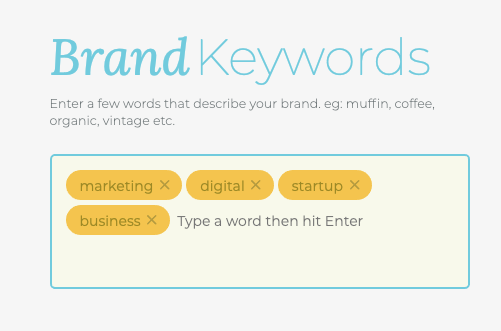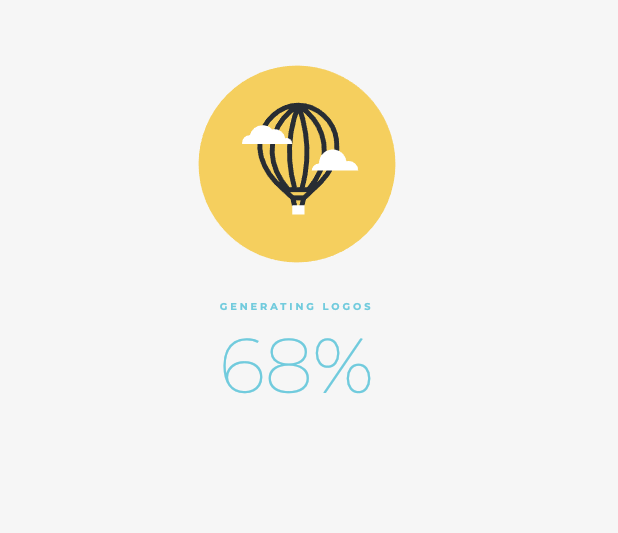What’s inside? Here are the questions answered in today’s reader mailbag, boiled down to summaries of five or fewer words. Click on the number to jump straight down to the question.
1. Losing faith
2. Thoughts on simple investment strategy
3. Tax bracket question
4. Compound interest question
5. Costco versus Sam’s Club
6. Question about “forever stamps”
7. Investing for near term
8. VA disability and property taxes
9. KitchenAid
10. Where should I retire?
11. Credit cards for specific purposes
12. Saving old journals
On the wall in my office are three framed pictures that my children drew for me when they were younger using finger paints. In the corner of each, my wife typed out a brief description of what the painting was supposed to be, transcribing what the children told her about them.
They are among my favorite possessions. I look at them at least a few times a day and they provide a constant reminder to me about what I’m doing, what I’ve done right, and what I might do better.
They’re older now. My daughter is a fantastic artist at this point, drawing still life far better than I ever dreamed of being able to do. My oldest son is developing into a skilled problem solver and is likely headed for some sort of engineering career. My youngest has a superb wit and the most insatiably curious mind I’ve ever come across.
Those pictures captured them at a moment in their lives that’s already past, yet when I look at the pictures, I don’t think of my children as they were, but as they are.
It’s pretty impressive what three pieces of paper and a few cents worth of finger paint can do.
Q1: Losing faith
I have worked for the DoE for 18 years and been through a few shutdowns, but this is the first time I’ve simply not received my paycheck. Part of the reason I have chosen to work for the government rather than an energy company is due to the stability of the job and now that feels like it is eroding. I don’t know when I’m getting paid next which is the very type of thing I wanted to avoid in private industry and took a somewhat lower paying job. I am losing faith in the government as reliable. Not sure what to do.
– Dan
After last week’s mailbag focused so heavily on the shutdown, I wanted to dial it back a little this week, so this is the only shutdown-related question. Again, I’m not interested in the politics of the situation, just how it affects the daily life of those affected by it.
In your shoes, Dan, I would probably start polishing up the resume. I get the impression that your finances are generally pretty stable and you can handle a short period without pay.
I would also use this as inspiration to remind yourself that the best kind of financial reliability is when you’re relying solely on your own savings, not the reliability of an employer. When things do return to normal, kick up your retirement savings a bit and get yourself into a place of financial independence just a little faster.
Q2: Thoughts on simple investment strategy
I wanted to get your thoughts on the investment strategy my great uncle told me about. He’s in his mid 60s and has been basically retired for about a decade. He ran a bakery but sold it to the manager about a decade ago and sometimes consults with them but that’s about it. He said that what he did was starting in the early 1980s when he was just starting out, he put a minimum of $100 a month into a savings account and then put in any windfalls he got. The minimum grew as his income did. Whenever the stock market dropped 10% from its peak, he would take half of his savings and put it in the stock market and then not watch again for another six months. He said he blew away the market doing this and it’s why he retired so early. I am skeptical because he sometimes tells tall tales and I think he is mostly retired on bakery money. Your thoughts?
– Alex
So, let’s break this down. He puts $100 a month into savings and then puts half of his savings into stocks every time the stock market is 10% or more lower than its peak, but he only does this every six months at most.
I tried my best to match this strategy in a spreadsheet to figure out whether this would actually beat the market. As best as I can figure, over the period of January 1, 1982 to January 1, 2019, this strategy would beat the market but not overwhelmingly, and it didn’t beat the market for long stretches in there.
I assumed a 3% return over that entire period on money in the savings account, and I only checked the stock market on the 1st of every month. I used the S&P 500 as the number for the “stock market” and assumed he was investing in the Vanguard 500, which basically matches the S&P 500.
Now, having said that, it’s worth noting that sitting on stocks over that period is simply a great investment. On January 1, 1982, the S&P 500 was at 117.30. On January 1, 2019, it’s at 2,584.62. That money he invested back in the early eighties utterly exploded in value. Heck, even as late as January 1, 2009, it was at 865.58 – it has basically tripled since then.
If your great uncle sold his bakery ten years ago and put a lot of that money into stocks, and he’d been doing this investment strategy as you described all along, he probably is sitting on a pretty penny right now.
As for whether you should do it, I don’t think it’s strictly better or worse than just investing that $100 directly every month. It really depends on how the market fluctuates, as all of these strategies do. Your great uncle got rich because he made a 40 year investment in stocks, not because he had a great timing strategy. Anyone with just about any strategy starting in the early 1980s would be doing very good today if they just left the money in the market.
In other words, I think you’d be in great shape if you used your uncle’s strategy. I also think you’d be in great shape if you just put $100 or $200 a month into a broad based index fund and sat on it for the next 40 years. The thing those two strategies have in common is that they’re both riding the long term stock market growth, and that’s where the real money is over the long term.
Q3: Tax bracket question
You wrote: “Let’s say you’re a single taxpayer who earns $35,000 per year. The first $9,275 of your income is taxed at 10%, and…
…the remaining $25,725 is taxed at 15%.
What?
While $35,000 falls into the 15% tax bracket, your effective tax rate is actually 13.7%. The higher your income, the more tax brackets you pass through to arrive at your effective tax rate.”
There is no listed 15% tax bracket for single taxpayers…..
That sentence is thoroughly confusing!
Please explain where you came up with that!
– Tammy
The article in question was written by Simple Dollar contributor Frank Addessi, not by me. I’ll do my best to explain this specific point more clearly.
First of all, Frank seems to have been using the 2017 tax brackets rather than the 2018 ones to explain the principle. His numbers perfectly line up with the 2017 tax brackets, which did include a 15% rate.
The current 2018 tax brackets for single filers look like this:
10% – Up to $9,525
12% – $9,526 to $38,700
22% – $38,701 to $82,500
24% – $82,501 to $157,500
32% – $157,501 to $200,000
35% – $200,001 to $500,000
37% – over $500,000
The easiest way to think of tax brackets is to imagine a big water fountain, one that has a bunch of progressively larger pools. When the little pool at the top overflows, the overflow runs down into the next pool which is a little bigger, and when that one overflows, that overflow runs down into the next pool, and so on. Here’s a picture if you want a visual aid.
So, in Frank’s example, he’s looking at someone who made $35,000 in taxable income this year. You start “dumping” that income into the 10% bracket until it “fills up” at $9,525. At that point, you still have $25,475 to put into the fountain, so we move down to the next bracket. It can hold all remaining income up to $38,700, and so it holds the remainder.
So, that first $9,525 is taxed at 10%, which means $952.50 in taxes, and the remaining $25,475 is taxed at 12%, which means $3,057 in taxes. Your total tax bill is $4,009.50, which is 11.5% of your income.
This person is in the 12% tax bracket and their effective tax rate is 11.5%. Remember, because some of your income always ends up in those smaller bowls with a lower rate, your overall effective tax rate is always lower than your tax bracket.
Hopefully this clears things up!
Q4: Compound interest question
I recently read a blog post about compound interest, which I’ve primarily associated with bank accounts. But the article also seems to associate compound interest with retirement accounts and I was wondering if you could provide some clarity.
One example early on says “Let’s say you have $5,000 in a retirement account, earning 7% interest each year. The first year you earn $350 in interest, which brings your total to $5,350. The following year, interest is calculated based on that $5,350 total … Even if you never deposit anything but the original $5,000, you’ll have $38,061.28 in 30 years.”
I know the average stock market return is 7%, but is it accurate to call that interest? If not, is there some other type of retirement account that genuinely offers 7% interest on your principle every year (as this article seems to suggest)?
Another example: toward the end it says “If you’re saving for retirement, invest in low-fee index funds. Fees of 1% or more will drag down your profit and cut into your compound interest. Index funds will follow the market’s course and provide a solid rate of return. Avoid picking individual stocks, as their volatility can be problematic.”
I’m on board with the ideas of low-fee index funds, but not for fear of high fees “cut[ting] into your compound interest.” Index funds are liable to lose value some years too, aren’t they?
I wouldn’t be giving this as much thought if it came from a smaller blog — but this is Mint. It makes me wonder if I fully understand how my retirement accounts are working, or if I’m missing an opportunity elsewhere. Is the article conflating two topics that don’t really connect to one another? Or is there a way to leverage compound interest to this big of a degree for retirement?
– Max
Mint is using the terms “investment returns” and “interest” interchangeably here in order to reduce the number of different terms being thrown at the reader. I do this myself – it’s a way of making similar concepts seem familiar and not overwhelm people with new terms, especially when they’re asking an introductory question.
They are distinct ideas, but they both have the same effect – if you let them sit for a long time, the growth they provide is powerful.
Your retirement account, assuming it’s invested mostly in stocks, doesn’t return “interest.” Rather, what happens is that you usually own shares in a mutual fund. Each time you put money into your retirement account, it’s used to buy more shares.
Over time, those shares grow in value – maybe not each and every year, but most years. They also regularly produce dividends, which are small cash payments for each of those shares, issued to you. Almost always, dividends are just used to buy more shares of that same investment.
So, shares grow in value over time and you’re also rolling dividends in to buy even more shares. The end effect of that is much like compound interest in a savings account – it builds and builds.
Although they’re not the same thing, the exponential growth curve of interest in a savings account and investments in a retirement account are similar. The growth curve of the savings account isn’t as steep, but it’s very steady and always upwards. The growth curve of the stock market investment is really bumpy, but overall trends upward much more strongly than the growth curve of the savings account.
Q5: Costco versus Sam’s Club
I don’t know anything about sam’s club because we joined it when it first came to town years ago and hated it. When Costco came to town, we heard such positive things we decided to give it a chance and have liked it much better. Reasons are several, including those you wrote about – esp. the gas prices as we pass the store every day. Further, they treat their employees really well. most importantly, they guarantee that if the credit card rewards (on their visa card) do not equal the membership fee, they will refund the membership fee. We have only one visa card and it’s theirs as we get a great deal of rewards based on gas alone.
– Jaden
My experience has been that different chain stores have different degrees of quality in different areas of the country. Where I live, the two closest warehouse clubs to my door are both Sam’s Club and they’re both clean and well stocked and well staffed, and both feature gas prices that are consistently about $0.07 per gallon cheaper than any of the stations near them.
There is a Costco in Des Moines (the closest Costco to me) and I found the experience there to be very similar when I’ve visited with friends with Costco memberships. However, having said that, I didn’t see anything that made it worth the substantial additional drive for me.
My experience is that they’re both fine, at least at the locations I’ve visited, and you should check out both in your area if they’re both available (along with BJ’s, another warehouse club chain popular in some regions of the United States).
Q6: Question about “forever stamps”
As you likely know, the largest increase in the cost of a stamp will occur on Sunday, January 27, 2019, as the price of a first class Forever Stamp goes from $0.50 to $0.55 (a 10% increase).
While the best way to save money on stamps is to call/TXT/email rather than mail a letter, sometimes mailing a letter presents a very good value (sending someone a note of appreciation, etc.). Due to how significant this increase is, I would recommended that anyone with no high interest debt who already has an emergency fund try to purchase 2-4 years’ worth of stamps, while anyone else try to acquire at least a 1-year supply of stamps (as long as they can do so without paying interest on the purchase). I’m curious how much of a supply of stamps you would recommend people acquire prior to this price increase?
– Stephen
Personally, we estimated how many stamps we’ll likely use over the course of 2019 (mostly personal letters and holiday cards) and bought them all already. This added up to 200 stamps, so the cost was $100, as compared to the $110 we would have spent had we bought those stamps at the end of January or later.
With a longer timeframe than that, the cost benefit of buying those stamps really starts to shrink. Your annual return starts to sag and you have the stamps for longer, which means there’s a greater risk of some sort of damage to the stamps (the longer you have them, the more likely they are to be lost, burnt, misused, and so on).
This is basically what we’ve done each time there’s been a bump in the cost of “forever stamps.” We’ve bought an entire year’s worth just before the bump in price. It’s not a big savings, but it saves us $5-$10 over the course of a year.
Q7: Investing for near term
You recommend fully investing in the Roth/529 even though they are less than 10 years out from likely needing the capital? I was thinking of them putting 10 or 20% aside for long term, although they are a bit depressed by the .1% interest our local bank returns to them. Any back of the envelope math as to what $2,000, invested at age 16, is worth at age 70?
– Annie
Yes, I recommend putting money into tax-advantaged education and retirement accounts, even if you’re less than ten years from your expected use.
The difference is that when you’re looking at that short of a timeframe, you choose investments that are intended for short and medium term investments, like safe bonds or money markets. They have a smaller average annual return than stocks, but they certainly beat savings accounts and have very little risk of losing money and you’re still able to pull out the gains tax free.
As for your other question, if you put in $2,000 into, say, a Roth IRA at age 16, put it aggressively into stocks, and let it ride until age 70, you should see an average annual return of 7% on that money. So, 54 years of a 7% average annual return on $2,000 gives you … are you ready for this … $77,224.30.
Now, it’s worth noting that $77K won’t go as far in 54 years as it goes now, but it’ll still be a very healthy chunk of money. If you withdraw 3% of it annually (which is a safe bet), that’s $2,317 a year. Yep, if he puts that $2,000 away now and starts withdrawing it every year at age 70, he’ll be able to pull out more than $2,000 a year basically forever and still hand down a big chunk of it to his kids/grandkids.
Q8: VA disability and property taxes
Can a veteran who is on total VA disability with no other income receive a tax refund on his home owners taxes?
– Jim
Property taxes are a deduction from one’s income tax bill. Since, as a person on total disability from the VA, you’re already paying no income taxes, you have nothing from which to deduct.
I don’t know the specifics of your financial state, but if you were to earn a small income, it’s likely that the deduction from the property taxes would take care of the income taxes on that small income.
However, if your income is solely from the VA due to total disability, property tax payments won’t help your income tax bill since you don’t have an income tax bill.
Q9: KitchenAid
it is my understanding that [KitchenAid] was bought out by a foreign company some time ago – surely since 50 years ago – and that the new company has been making them with some parts being plastic that were metal originally. I have seen reviewers saying that the old ones really do last “forever” if one takes good care of them, whereas some of the newer models’ plastic parts tend to wear out. I don\’t remember seeing any mention of whether those plastic parts can be replaced. I think I found this information on consumer information web sites.
– Annie
Whirlpool purchased KitchenAid in 1986. At some point in the late 1990s, it seems that KitchenAid replaced the gearbox in some of their stand mixers with one made of nylon rather than the original one made of metal.
The issue isn’t that the nylon ones wear out under normal use, but that people tend to stress them. For example, the instructions for the manual state to only use the dough hook attachment on speed setting 1 or 2, but people often turn it to 3 or higher. This causes the gearbox to get overworked and cause breakdown issues.
Today, KitchenAid makes two lines of stand mixers – the Artisan and the Pro line. The Artisan has a nylon gear box where the Pro line seems to have the old-style metal gear box… but the Pro line is substantially more expensive.
One note: the reason many people believe that “old things are more reliable” is due to selective bias. People remember the things that worked well in the past and forget the things that do not, and then they compare those things that worked well to everything now, where some things work well and some things do not. That’s always been true.
Q10: Where should I retire?
My husband I are targeting early retirement within 10 years but we’ll be figuring out a location in 3-5 years. We want to spend the next few years visiting a variety of possible locations, narrow it down to a shorter list and then try out a few, staying 6 months to a year. Where would you start? What criteria would you consider? What resources are available, particularly those geared towards retirees (we don’t really care about the quality of local schools these days). Thanks for any suggestions.
– Margaret
If I were you, I’d start by figuring out what you want to do in retirement. What do you want your typical day to look like? Does it involve regular time with family? With friends? Does it involve a lot of time outside in warm weather? Do you guys like cold weather? How do you want to spend your time?
Questions like that should narrow down your target locations pretty quickly. Once you’ve addressed those kinds of quality of life issues, I would focus on cost of living and aim for areas that have a low cost of living while still meeting your other quality of life goals. I like using this cost of living calculator.
Since you’re retiring early, I wouldn’t prioritize access to services too much at this point. Instead, focus on what will give you the aspects of life you want with a low cost of living.
Q11: Credit cards for specific purposes
I have not used credit cards until a few years ago and wondering if the following expenses qualify as recurring payment for which the card gives a cash-back: 1. Monthly rent paid to the apartment landlord (not sure if the landlord would accept credit card though but rent is the single largest toll on my modest purse); 2. Life insurance premiums. These do accept credit card payments and I am about to apply for two.
– Sasha
I think that using credit cards for very tight specific purposes like this is a good choice, as it raises your credit score and likely provides some sort of reward bonus or “cash back” bonus for the card. The key, of course, is paying off the balance in full each month.
You’ll have to check with the credit card in terms of whether or not such payments qualify for the cash back reward. It depends on the specific offer and probably on how you go about the payment.
If I were you, the next step I’d take is talking to my landlord about credit card payments. My guess is that a small business might not accept credit cards, but a large one will.
You may want to consider other strict uses for it as well, such as gas purchases or other regular bills.
Q12: Saving old journals
I loved to learn that you also use the “three morning pages” idea! I have been doing this for years and years, since 2000 at least. Question: what do you do with the old journals? I have a box of them in the garage. I realize I don’t really look at them but it feels wrong to just burn them or throw them away but I also don’t really want my kids to read them because they’re really personal and I sometimes work through hard feelings about motherhood.
– Jenny
Personally, I digitize all of my old journal entries and then destroy the originals. (The exception is journals that I’m hand-writing for each of my kids to give to them when they’re adults that contains a summary of the life advice I have for them along with things like family histories and recollections.)
My process is that when I finish a journal, I put it aside for a while until I realize I’m no longer looking back on it (usually six months or so), then I cut all of the pages out of the binding and scan them all (I use Scanner Pro). Then, I burn the original pages.
That way, I can easily browse through them when I want, search through them using text searching, and they’ll basically go away when I die (I suppose one of my kids might find them if they trawl through lots of my digital detritus, but most likely they’ll just toss out old computer equipment without a second thought).
Most of the stuff I’ve written is simply me working through personal problems, and I really have no interest in rereading that stuff. The valuable stuff, for me, is when I’m working through an intellectual idea, because I often want to revisit the earlier thoughts.
Got any questions? The best way to ask is to follow me on Facebook and ask questions directly there. I’ll attempt to answer them in a future mailbag (which, by way of full disclosure, may also get re-posted on other websites that pick up my blog). However, I do receive many, many questions per week, so I may not necessarily be able to answer yours.
The post Questions About Tax Brackets, Compound Interest, Warehouse Clubs, Stamps, and More! appeared first on The Simple Dollar.

Source The Simple Dollar http://bit.ly/2FrDsFM














